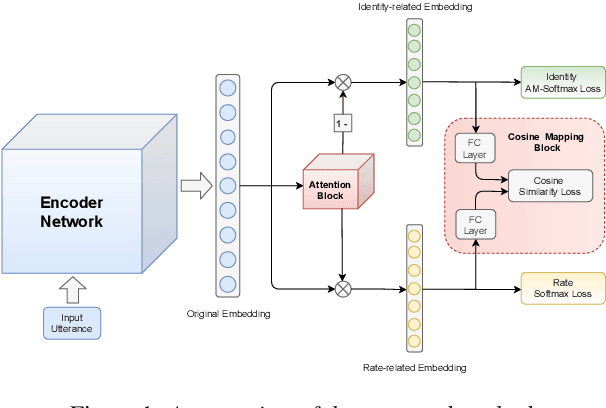Xingjia Xie
ReFlow-TTS: A Rectified Flow Model for High-fidelity Text-to-Speech
Sep 29, 2023Abstract:The diffusion models including Denoising Diffusion Probabilistic Models (DDPM) and score-based generative models have demonstrated excellent performance in speech synthesis tasks. However, its effectiveness comes at the cost of numerous sampling steps, resulting in prolonged sampling time required to synthesize high-quality speech. This drawback hinders its practical applicability in real-world scenarios. In this paper, we introduce ReFlow-TTS, a novel rectified flow based method for speech synthesis with high-fidelity. Specifically, our ReFlow-TTS is simply an Ordinary Differential Equation (ODE) model that transports Gaussian distribution to the ground-truth Mel-spectrogram distribution by straight line paths as much as possible. Furthermore, our proposed approach enables high-quality speech synthesis with a single sampling step and eliminates the need for training a teacher model. Our experiments on LJSpeech Dataset show that our ReFlow-TTS method achieves the best performance compared with other diffusion based models. And the ReFlow-TTS with one step sampling achieves competitive performance compared with existing one-step TTS models.
Deep Representation Decomposition for Rate-Invariant Speaker Verification
May 28, 2022


Abstract:While promising performance for speaker verification has been achieved by deep speaker embeddings, the advantage would reduce in the case of speaking-style variability. Speaking rate mismatch is often observed in practical speaker verification systems, which may actually degrade the system performance. To reduce intra-class discrepancy caused by speaking rate, we propose a deep representation decomposition approach with adversarial learning to learn speaking rate-invariant speaker embeddings. Specifically, adopting an attention block, we decompose the original embedding into an identity-related component and a rate-related component through multi-task training. Additionally, to reduce the latent relationship between the two decomposed components, we further propose a cosine mapping block to train the parameters adversarially to minimize the cosine similarity between the two decomposed components. As a result, identity-related features become robust to speaking rate and then are used for verification. Experiments are conducted on VoxCeleb1 data and HI-MIA data to demonstrate the effectiveness of our proposed approach.
 Add to Chrome
Add to Chrome Add to Firefox
Add to Firefox Add to Edge
Add to Edge